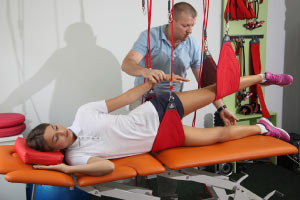Description
In this course, you will :
- You will learn the following in this course:
- Discuss the teaching and learning context in higher education and consider the potential challenges and opportunities.
- Explain key concepts in teaching and learning, as well as relevant evidence, in relation to effective university teaching.
- Analyze the connections between different aspects of teaching and student learning.
- Determine a variety of instructional strategies to aid in effective student learning.
- Use key concepts to structure course outlines and lesson plans in order to create learning experiences that support successful student learning.
Syllabus :
1. (A) Course Introduction
- Course introduction
(B) What does it look like teaching in higher education?
- Module overview
- Teaching and learning spaces
- Student voice: What are we looking for in university education?
- Student voice: What kind of teaching engages us?
- Student diversity in learning (I) : Three examples
- Student diversity in learning (II) : Implications for teaching
- What does it involve teaching in a university? – Interviews with colleagues
- What options do we have for long-term professional development? – Interviews with colleagues
2. What does research tell us about effective teaching in higher education?
- Module overview
- Three domains of learning and levels of understanding
- Teaching and learning approaches
- Factors that influence student learning (I)
- Factors that influence student learning (II)
- Seven principles of effective teaching (I)
- Seven principles of effective teaching (II)
- Seven principles of effective teaching (III)
3. How shall we go about curriculum and instructional design?
- Module overview
- Constructive alignment
- Interview with Biggs and Tang
- Writing learning outcomes (I)
- Writing learning outcomes (II)
- Writing learning outcomes (III)
- Compiling a course outline
- Planning a lesson
4. What pedagogical options can we find from successful examples? – An instructional toolbox
- Module oveview
- Problem-based learning (I) : PBL in practice
- Problem-based learning (II) : Rationale, design and practical experiences
- Audience response system
- Think-pair-share
- Teaching a large class
- Flipped learning
- Team-based learning
- Experiential learning
5. How to design effective assessment?
- Purposes of assessment
- The impact of assessment on students’ learning and the backwash effect
- Decisions framework for assessment design
- Contexts of assessment: Learners’ characteristics
- Contexts of assessment: Standards-based assessment and norm-based assessment
- Interview with Prof. Royce Sadler on understanding standards
- Groupwork assessment
- Principles of good assessment practices
6. How to provide constructive and high-impact feedback?
- Introduction of feedback and the relationship between assessment and feedback
- Feedback that makes a difference
- Small changes in feedback practices making a big difference
- How to make feedback sustainable?
- Principles of good feedback









